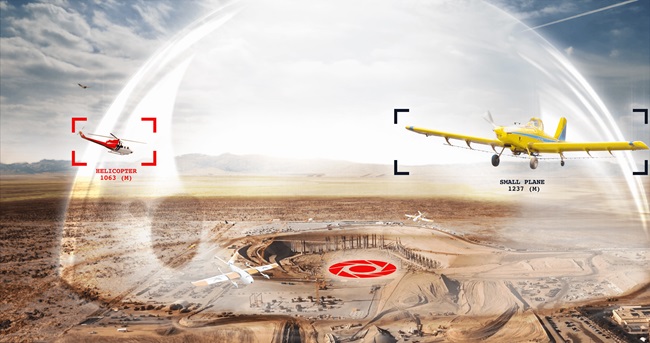The FAA on August 30 awarded an ITT Corporation team the $1.8 billion contract to build and operate the ADS-B (automatic dependent surveillance-broadcast) ground infrastructure. Unlike traditional FAA projects where the contractor builds the equipment and turns it over to the agency, ITT will own the infrastructure and supply aircraft position data to the FAA.
While the FAA calls ADS-B the "backbone" of the NextGen air traffic control modernization program, "this is really just Phase One of a project that extends out more than a decade," said AOPA President Phil Boyer. "This won't be like the hurried Mode C transponder mandate when Congress gave aircraft owners 18 months to equip. If ADS-B is ultimately mandated for general aviation, it won't be until 2020."
The open question about when and what will be required is because the FAA rushed the ADS-B contract without much consultation with the industry. The notice of proposed rulemaking (NPRM), setting the regulations and procedures on the transition to ADS-B for air traffic control, hasn't been released yet.
"To put it in pilot terms, the FAA has launched on its flight toward NextGen without checking the weather or programming the flight plan in the GPS," said Boyer. "We believe in the promise of the technology and the benefits it could bring to GA pilots, but at this point there is a degree of risk that those benefits may not accrue."
For example, AOPA believes one of the benefits to aircraft owners would be replacing the currently mandated Mode C transponder with the infinitely more capable ADS-B equipment.
But it hasn't been determined whether ADS-B will ultimately replace transponders for such things as TCAS (traffic collision avoidance system).
Boyer noted that ADS-B is a technology that provides the greatest benefits to the FAA and the airlines, yet the airlines have already expressed reservations about equipping. "We've yet to see a business case made for either side of that equation," said Air Transport Association President James May, referring to the $40 billion FAA and the airline industry will collectively spend to build and equip for NextGen.
But once standards are set and avionics manufacturers start building in volume, it may be worth the cost for some aircraft owners to voluntarily equip with ADS-B, if the FAA holds to its promise to provide nationwide free uplinked weather and traffic data (FIS-B and TIS-B) in the cockpit as early as 2013.
AOPA has been a longtime advocate of satellite navigation and ADS-B. The association's seminal report to Congress in 1990, "The Future is Now," advocated civilian use of GPS back when it was strictly a military system. That report also predicted using GPS to replace radar for air traffic control surveillance.
AOPA has demonstrated ADS-B technology in its aircraft since 1999 and currently houses an ADS-B ground station right outside Boyer's office.
Some 75 percent of AOPA members have said they would be willing to equip their aircraft with ADS-B if free weather and traffic information were provided, and if the equipment cost was about the same as a transponder, which it could also replace.
"We eagerly await the NPRM so that we can find out exactly where the FAA is going with ADS-B," said Boyer. "If the promises are delivered, general aviation will embrace the technology."
See AOPA's ADS-B issue brief.
August 30, 2007
What's ADS-B?
In an industry already swimming with abbreviations, ADS-B is one you should get to know. You'll be hearing a lot about it over the coming years.
It's a lot simpler when you break it down, letter by letter. The "A" stands for automatic. That's good. It means you don't have to do anything except fly the airplane. The "D" stands for dependent. Unlike something you might claim on tax forms, dependent here means that it relies on, let's call it, a positioning source.
The "S" as in surveillance means that air traffic control can see you, even when there's no radar coverage such as in remote parts of Alaska. Finally, the "B" stands for broadcast. Since it's polite to reciprocate, that means your aircraft is not only receiving but sending information to other ADS-B-equipped aircraft and to controllers.
Put it all together and you get the impressive sounding automatic dependent surveillance-broadcast.
Now let's throw two more abbreviations at you: TIS-B and FIS-B.
The first one stands for traffic information service broadcast. ATC radar picks up the data, thanks to Mode C transponder reports, and sends it to your aircraft via ground-based stations. FIS-B stands for flight information service broadcast and provides the graphical and textual weather information, also from ground-based stations.
So what are the benefits?
It means a huge cost savings for the FAA because the agency can invest its money in inexpensive ground-based transceivers rather than multi-million-dollar radar systems. AOPA, on the other hand, wants pilots to benefit from free access to weather and traffic data, which would increase safety and efficiency. Also, AOPA wants to make sure the equipage requirements are not excessive.
But until the FAA actually publishes its ADS-B proposal, we won't know the specifics. Stay tuned.
For some real-world ADS-B flying experiences, read the story from AOPA Pilot.



